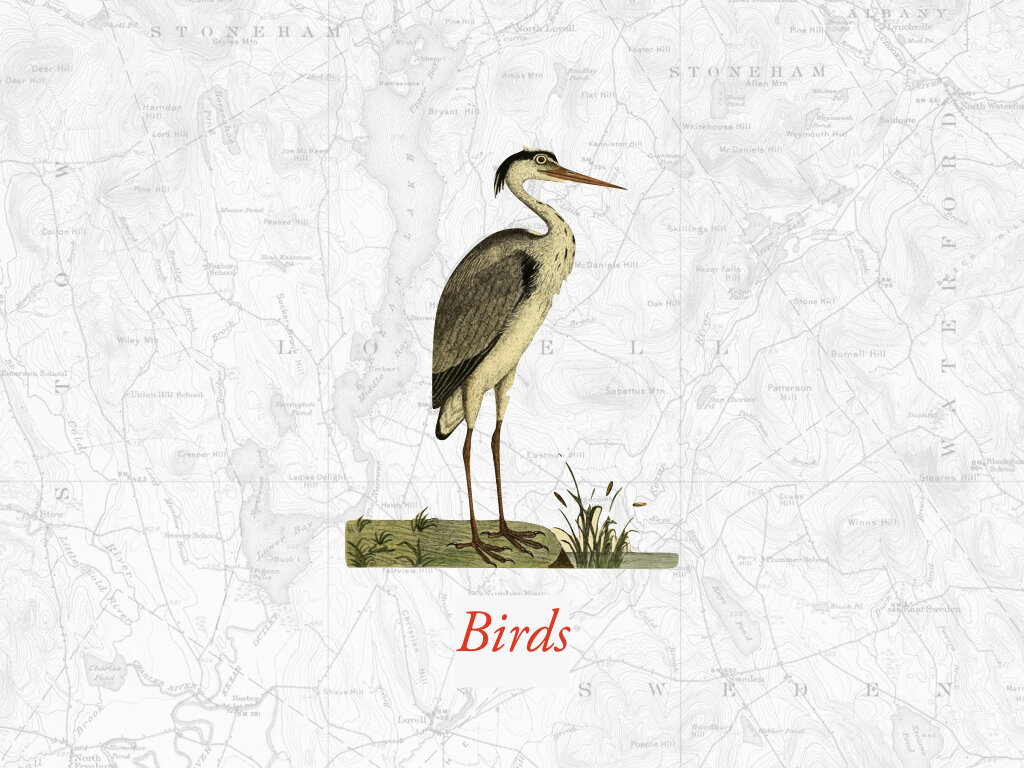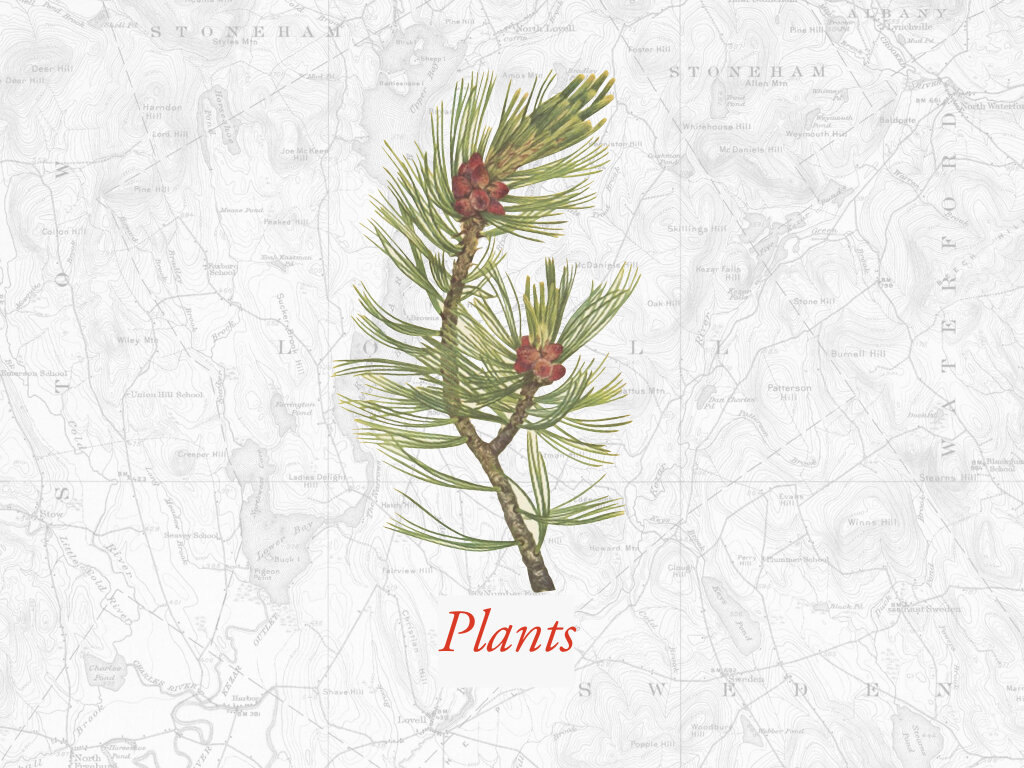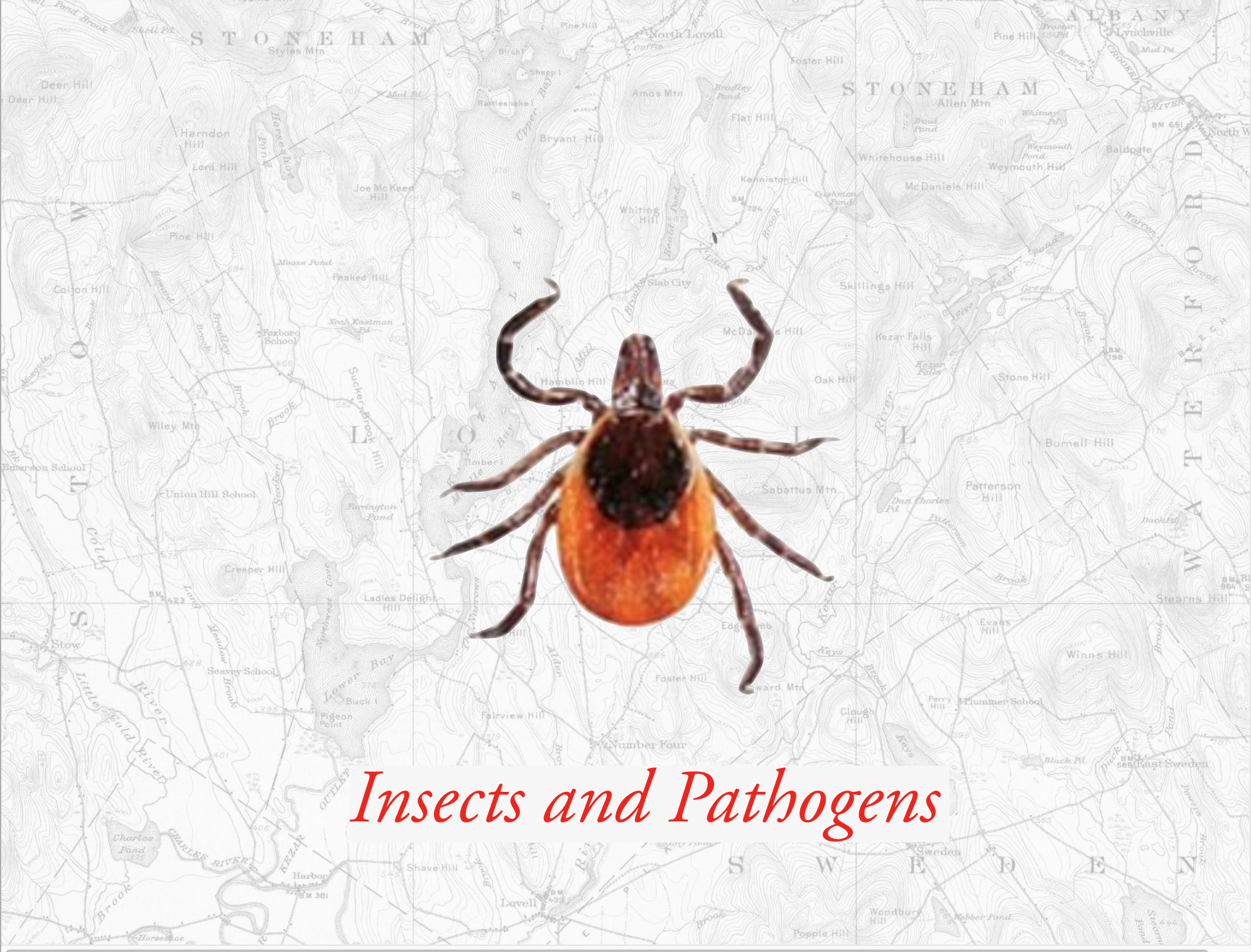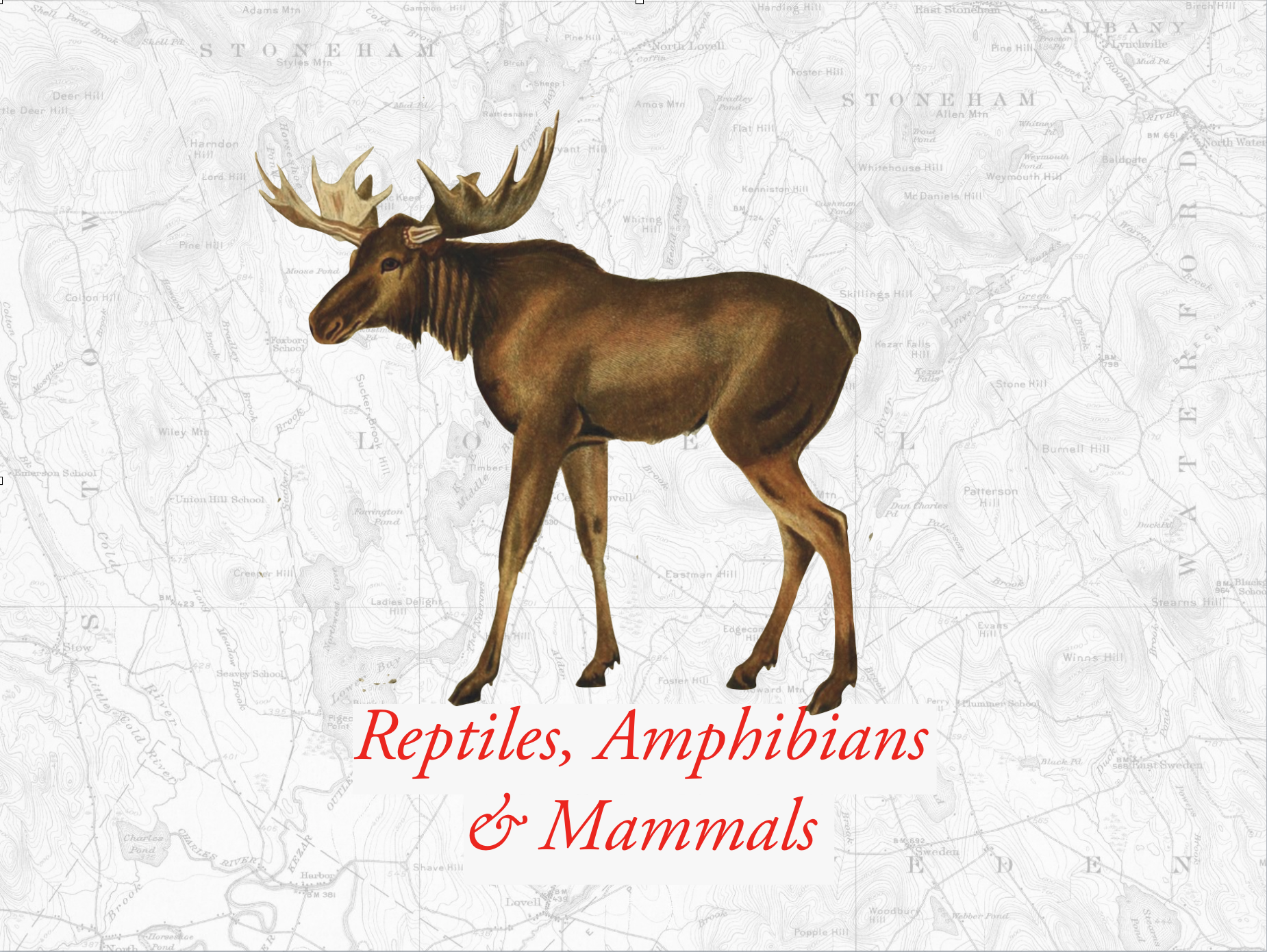Climate Change affecting Maine’s Terrestrial Life
Climate stress is predicted to put about 37% of Maine’s terrestrial plant and animal species at high risk. Variable precipitation and warmer air temperatures will force more sensitive or cold-weather species and agricultural crops out of the area, which will become especially vulnerable as pollinators decline. Most susceptible are species living in wetlands, alpine areas, or central/northern uplands. Spruce and fir, for example, will move farther north and to higher elevations, while oak-pine forests take over.
Warming temperatures are also expected to result in a local increase in exotic species, invasive diseases and pests, as native species become climate stressed. An increase in the incidence of Lyme disease in humans is predicted, and tick disease–along with heat stress–is expected to put wildlife populations, such as moose, at great risk.
local land trends summary
Climate affects the abundance, extent, and diversity of all life on the planet – plants and trees, birds, mammals, and insects and pathogens. As the climate changes, terrestrial species will need to adapt to or move from these changing environments.
Many of Maine’s animal and plant species are predicted to be at risk from climate stress. We can watch for change in these populations as indicators of climate change. The CCO intends to collaborate with existing phenology networks across the country to better understand the periodic plant and animal life cycle events and how these are influenced by seasonal and interannual variations in climate, as well as habitat factors.
species trends
Learn more about the impacts of climate change on our terrestrial species by clicking on the buttons below.
projections
Birds in the Kezar Lake watershed that are most likely to decline due to climate change include the Black-capped Chickadee (Maine State Bird), Evening Grosbeak, Ruffed Grouse, Wood Thrush, and all high-elevation species. Birds that may increase or move into Maine include the Tufted Titmouse, Canada Goose, House Finch, Brown-headed Nuthatch, and Loggerhead Shrike. A study by the National Audubon Society found that more than 50% of Maine’s 230 bird species are at risk from climate change as more than half of their current range will be lost.
Terrestrial trees and plants will shift along with changing climate patterns, especially those species living in wetlands, alpine areas, or central/northern uplands. The sap season for maples will come earlier and sugar maples may be restricted to northern Maine.
Milder winters will continue to increase the prevalence of heat stress and tick-borne diseases in moose, causing a further decline in moose populations across Maine.
More warm and wet weather pests will continue to move into Maine and harm our native plants and animals. Pests such as deer ticks carrying Lyme disease will pose an ever-growing threat to humans in Maine as well.
references
Duchesne, L., and D. Houle. “Interannual and spatial variability of maple syrup yield as related to climatic factors.” PeerJ 2 (2014):e428.
Fernandez, I.J., C.V. Schmitt, S.D. Birkel, E. Stancioff, A.J. Pershing, J.T. Kelley, J.A. Runge, G.L. Jacobson, and P.A. Mayewski. “Maine’s Climate Future: 2015 Update.” Orono, ME: University of Maine (2015): 24 pp. www.climatechange.umaine.edu/research/publications/climate-future
Fleming, D. Winter ticks raise concerns about future of Maine’s moose herd. Portland Press Herald, 14 June 2014. http://www.pressherald.com/2014/06/14/winter-ticks-raise-concerns-about-future-of-maines-moose-herd/
Leighton, P.A., J.K. Koffi, Y. Pelcat, L.R. Lindsay, and N.H. Ogden. “Predicting the speed of tick invasion: an empirical model of range expansion for the Lyme disease vector Ixodes scapularis in Canada.” Journal of Applied Ecology 49 (2012):457–464
Robinson, S. Infectious Disease Epidemiology Report: Lyme Disease Surveillance Report—Maine, 2013. Augusta, ME (2014): Maine Center for Disease Control and Prevention. http://www.maine.gov/dhhs/mecdc/infectious-disease/epi/publications/2013-lyme-surveillance-report.pdf
Rodenhouse, N. L., et al. “Potential effects of climate change on birds of the Northeast.” Mitigation and Adaptation Strategies for Global Change 13.5-6 (2008): 517-540. http://www.ucsusa.org/sites/default/files/legacy/assets/documents/global_warming/pdf/miti/rodenhouse_et_al.pdf
Skinner, C.B., A.T. DeGaetano, and B. Chabot. “Implications of twenty-first century climate change on Northeastern United States maple syrup production: impacts and adaptations.” Climatic Change 100 (2010):685–702.
Whitman, A., et al. “Climate Change and Biodiversity in Maine: Vulnerability of Habitats and Priority Species. Brunswick, ME (2013): Manomet Center for Conservation Sciences. https://www.manomet.org/sites/default/files/publications_and_tools/2013%20BwH%20Vulnerability%20Report%20CS5v7_0.pdf





